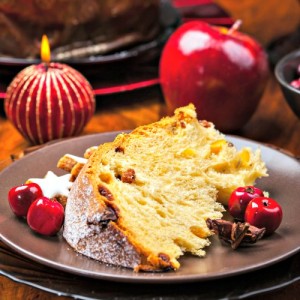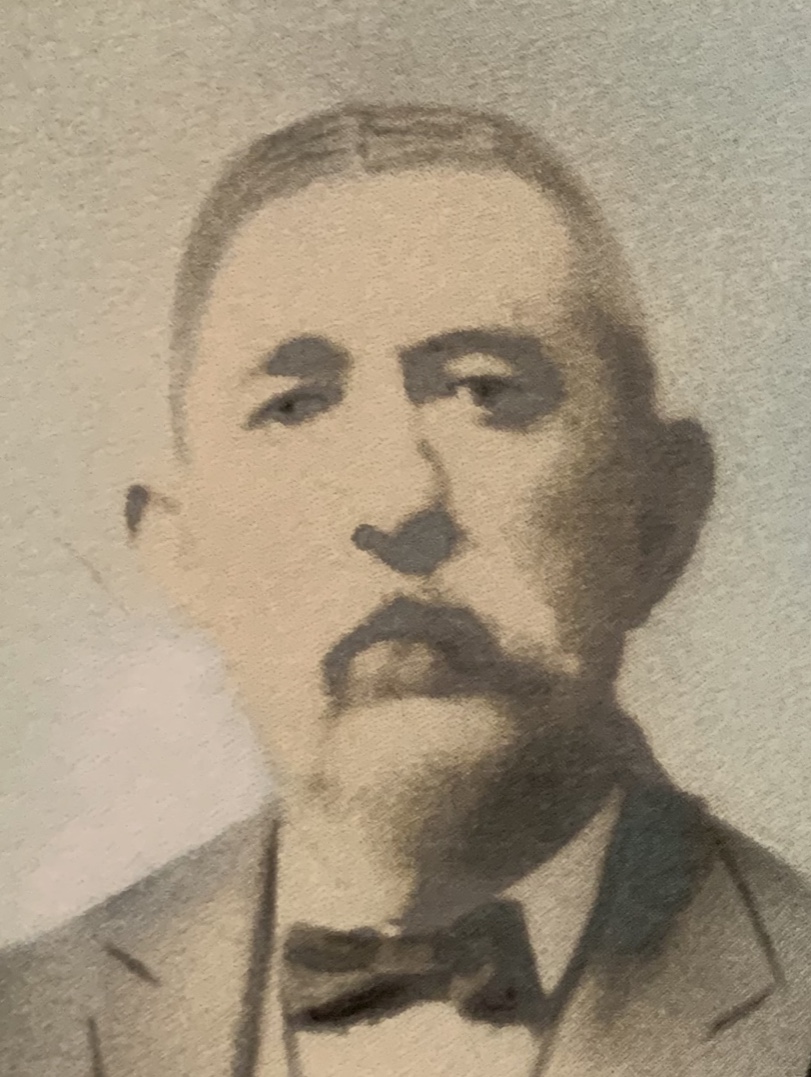Margaret Johnson has been cranking out cookbooks about Irish cuisine since 1999. There are nine books in all. If you’ve read them, you know that recipes, while at the heart of it all, really only account for part of the picture.
Eye-catching photos of bustling Irish cities, quaint towns and coastal communities fill every book. Interspersed with the recipes and pictures are neat little vignettes, food for the soul, offering rare insights into Irish culture, customs and history—all, of course, as they relate to food.
Fans of Johnson’s cookbooks know that she’s on a mission to persuade readers—especially Irish Americans—that there is so much more to Irish cooking than lamb stew, soda bread and Dublin coddle. (Not that those aren’t wonderful things.)
Her new book, “Christmas Flavors of Ireland: Celebrating the Festive Season,” might be the prettiest and most scrumptious yet. And that would be saying something. You’ll find everything from savory starters to decadent desserts—and lots in between. Johnson has a lot of friends in the Irish culinary community—and, happily for all us, they’re willing to share their best stuff.
We chatted with Johnson about the Christmas book in particular—with occasional side trips.
Here’s what she had to say.
Q. Could we talk first about the graphics, and you seem to have contributions from many sources. The first photo you see in the book shows Christmas on Dublin’s Grafton Street, with all the lights. Inside, there’s a photo of the front door leading into Johnnie Fox’s Pub in Glencullen, a bright green wreath in the center. One of my favorites is a shot of the Giant’s Causeway, dusted with snow, with wispy clouds in the background. Why is good photography so important to you?
A. A lot of the people like to look at the pictures! I have heard that some people who buy my books never read one recipe. That’s actually how I sold my second cookbook. When I wrote my first book, I was an untested author. They didn’t invest any money in photography. All they used were stock photos that introduced the chapters. If it had photos, I think it would have sold many more. I said to them, you may not know Irish people the way I know them. They think of Ireland as this magical, mysterious place, and they all want to see pictures of them. So I convinced them.
Q. “Christmas Flavors of Ireland” obviously isn’t just about the food. The recipes are at the center of it all, but how much do you think about setting the scene, the context in which these great dishes are presented? What kind if research goes into finding and explaining Celtic holiday traditions that Americans might not be aware of. I’m thinking specifically of December 8, Big Market Day, for one.
A. I was never was aware of Big Fair Day. A friend had written it for an older book, and I asked him for permission to run it again for this book. I do like to put things like that in books. Right now, I’m working on “Favorite Flavors of Ireland.” It’s something of a retrospective. I’m going to take recipes from my previous books, and some new ones, and talk about why they are my favorites, and why those places are my favorites. People are always asking me, ‘So what’s your favorite recipe? What’s your favorite place. Whats your favorite ingredient?’ I thought the word “favorites” can encompass people and places and holidays and things of that sort. So it will be a combination of recipes—and a little more story-telling.
Q. As you approached the Christmas cookbook, were you thinking about changing people’s minds about how the Irish celebrate Christmas through food? It just seems like one more way of making the point that you can’t make assumptions about Irish cooking, that it’s all ham and cabbage. I’m thinking of the recipe for Italian Pannetone Bread and Butter Pudding, for one.
A. Probably 15 or 20 years ago, an Irishman wouldn’t have thought about Pannetone! Chef Sally Luykx presented that recipe about eight or 10 years ago. At that time, people had never heard of Pannetone. It wasn’t what Irish people were thinking about eating. But now, the Irish are very sophisticated in their tastes. Irish-Americans are not. They say, this is not what Irish people eat, but for me this is the whole point. It’s what Irish food is like these days. A lot of Irish-Americans dont want to accept that. They want the sheep and the cows. They think that’s what it’s like.
Q. Are you past the point where you’re surprised at what turns up on the Irish menu?
A. Sometimes, I am a little surprised. I think that some of the ideas are a little overdone. They they too hard. Let’s take black pudding, because that comes up a lot. Black pudding is something people have for breakfast, but I’ll find something like black pudding with pineapples on shrimp, or something crazy. A lot of chefs try to be so creative with authentic Irish food that it turns out to be ridiculous. Sometimes they go to extremes to make the point that they’re very sophisticated—to counter the old sterotype of stew and lamb chops. I would never put anything like that in any of my cookbooks.”
Q. Tell me about your dedication. It’s to Carl, your husband, “for his continued indulgence in all things Irish.” I know that he passed away recently of ALS (amyotrophic lateral sclerosis, often referred to as Lou Gehrig’s Disease).
A. Most of my previous cookbooks, I dedicated to him. I’d say, ‘We’re going back to Ireland,’ and he’d say: ‘Again?’ And then he’d say, ‘Well, OK, if you insist.’ But he would be the first one to have his bag packed. In 2012, we went three times. His mother was Italian, and his father was what they call a “brooding Swede.” At his funeral, I had them play the Phil Coulter’s song, “The Old Man.” You’re supposed to play liturgical music, but they said it would be fine. To say that some people were weeping uncontrollably would be an understatement. Someone told me afterward, he’s the only Swedish-Italian guy who had the most Irish sendoff they’d ever seen.
We thank Margaret Johnson for her continued and support of irishphiladelphia.com—and for her generosity.
If you’ve been waiting for an Irish Christmas recipe to sink your teeth into, here are two:
Pannetone Bread and Butter Pudding
1 lb. Pannettone, or any yeast bread with fruit
4 oz. butter, at room temperature
8 tbsp. lemon curd
5 large eggs
2 cups heavy whipping cream
1 cup granulated sugar
Vanilla ice cream, for serving
- Preheat the over to 325 degrees. Butter 8 6-ounce ramekins.
- Cut the Pannetone into 8 slices. Spread each slice with 1 tbsp. of butter, and then spread with the lemon curd. Cut each slice into squares and divide among the ramekins.
- In a large bowl, whisk together the eggs, cream and sugar. Spoon the egg mixture over the bread, and then press down gently. Let the puddings soak for 5 to 10 minutes, and then spoon any remaining egg mixture over the bread to be sure it is soaked.
- Bake for 30 minutes, or until the puddings are risen and the tops are lightly browned. Remove from the oven, run a long knife around the edge of the ramekins to loosen the puddings, and then transfer to serving plates. Serve with ice cream.
Burren Smoked Salmon on Potato Pancakes
Potato Pancakes
2 large potatoes, cooked and mashed
1 large egg, beaten
1 tbsp. all-purpose flour
1 tsp. baking powder
Salt and freshly ground pepper to taste
1/4 to 1/2 cup whole milk
Butter for frying
1/2 pound smoked salmon, cut into 24 1/2-inch-wide strips
1/2 cup sour cream or creme fraiche
Fresh chives for garnish
- To make pancakes, put the potatoes, egg, flour, baking powder, salt and pepper into a food processor. Pulse 4 to 5 times to blend, and then gradually add enough milk to make a thick, smooth batter.
- Heat a large skillet over medium-high heat. Brush the pan with butter. Drop spoonful of batter into the pan and cook for 2 to 3 minutes on each side, until browned and heated through. Repeat with additional butter and remaining batter. Cakes can be served immediately or refrigerated, covered, overnight; reheat in a hot oven.
- To serve, put a spoonful of sour cream or creme fraiche on top of each pancake. Put a piece of rolled salmon on top, sprinkle with pepper, and garnish with chives.
If you’d like to experience the culinary side of Ireland firsthand, you can join Margaret as she leads a “Flavors of Ireland” tour in October 2014. For full details, visit www.irishcook.com after January 1.



